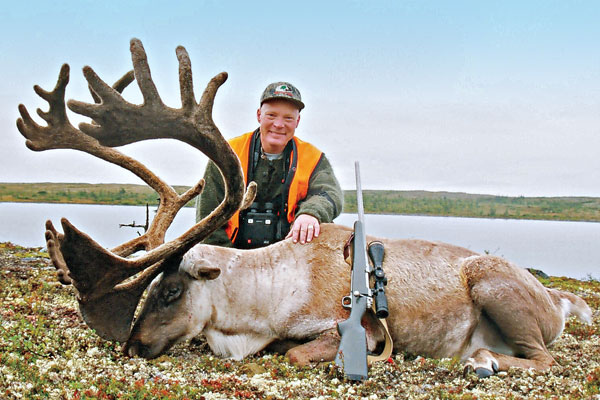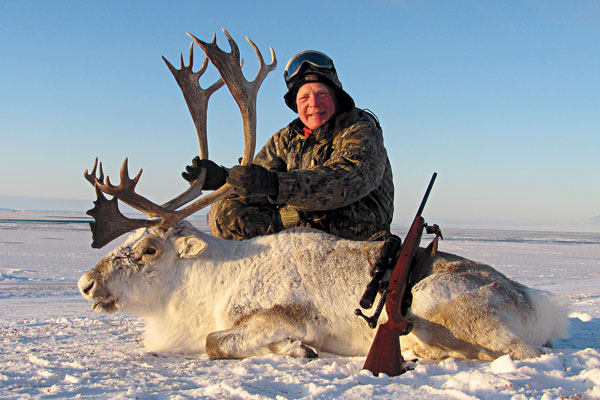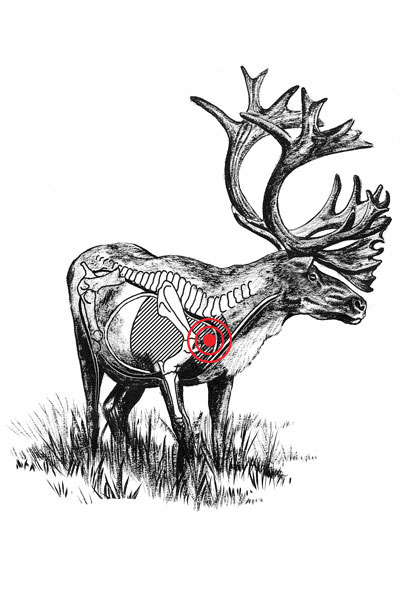September 11, 2015
By Craig Boddington

Santa's reindeer and caribou are actually the same animal: Rangifer tarandus, a medium-sized deer that circumnavigates the globe in the northern hemisphere, called reindeer in Eurasia and caribou in North America.
Although they start in the northern forests, caribou are properly creatures of the treeless tundra, with lichen a staple source of food. Although group size varies dramatically, caribou are very much herd animals. Unlike many deer, most populations migrate from summer to winter range; the distance may be just a matter of a change in elevation€¦or it can be an odyssey of hundreds of miles.
Neither biologists nor the various record-keeping organizations agree entirely on the subspecies and races of North American caribou. The most commonly used divisions are based primarily on regional size and antler characteristics, but caribou also vary individually from fairly dark to nearly white.
Advertisement
From east to west, Boone and Crockett recognizes woodland caribou, in Newfoundland and below treeline in eastern and central Canada; Quebec-Labrador caribou in northern Quebec and adjacent Labrador; Central Canada barren ground caribou on the mainland of Northwest Territories and Nunavut; mountain caribou in the Mackenzie District, southern Yukon, and northern British Columbia; and barren ground caribou in northern Yukon and Alaska.
All authorities agree that the small, very white, and fully protected Peary caribou of Canada's northern islands is a separate race, but Safari Club International adds Arctic Island caribou, primarily on Victoria Island.
Advertisement
Caribou antlers aren't easy to judge because there is so much to look at: one or two brow formations, called shovels; another formation perhaps a third up the beam called the bez; and then there are the beams themselves, top points, and, in many cases, back points. There are regional differences in typical antler characteristics.
For example, woodland caribou tend to have the smallest antlers with weak shovels and lots of points; Quebec-Labrador bulls carry large antlers and often have strong shovels and bez formations; mountain caribou are known for very strong top points; and barren ground caribou tend to have main beams in a "C" shape and, overall, grow the largest antlers. But the reality is that if one put the mounted heads of good caribou from different races side by side on the wall, it's unlikely that anyone could correctly identify them all.
Given proper research and a modicum of luck, most caribou hunts are successful, but what you really want is to hit the migration. This is not an overnight event. A given "herd" actually comprises hundreds of smaller groups moving in the same general direction. A migration will take days and often weeks to pass, and there will be a few individuals moving in advance and a few following after the migration has essentially passed.
It isn't the end of the world if you miss the migration, but you're going to have to walk a lot more to find those few stragglers, and the tundra will seem very lonely indeed.
Although most of my caribou hunts have been successful, I've actually hit the migration exactly right only twice: in Northwest Territories in 1979 and northern Quebec in 2001. When it's right, it's right, with lines of caribou marching from horizon to horizon — one of nature's greatest spectacles.

NATURAL HISTORY
The caribou is a long-legged deer with distinctively large hooves, which allow easy travel both in winter snows and in summer muskeg.
The woodland caribou is considered the largest bodied, with bulls often weighing more than 400 pounds. Peary caribou are very small, no more than 150 pounds. Most caribou bulls are just slightly heavier than the largest mule deer, perhaps 350 pounds.
Caribou rut late September through early November, with fawns born in May and June. Unique in the deer family, both males and females (typically called bulls and cows, but in Newfoundland males are referred to as "stags") grow antlers, but cow antlers are small and spindly and there should be no confusion.
The caribou's primary natural enemy is the wolf. They are also preyed upon by brown/grizzly bears and polar bears, but they are at very little risk from their Arctic environment because their hollow hair provides some of the best insulation in the animal kingdom.
Caribou are herd animals and are able to use their hooves collectively to dig through ice and snow to find the moss and lichens they subsist on.
SHOOTING AND SHOT PLACEMENT
Caribou are not considered especially tough for their size, but they do seem fairly resistant to bullet shock, perhaps because of a slow nervous system. They willsuccumb to a behind-the-shoulder lung shot like any other game, but most experienced  hunters and guides recommend a shoulder shot for anchoring caribou.
hunters and guides recommend a shoulder shot for anchoring caribou.
Neither their size nor their toughness dictates a particularly powerful cartridge. Normal deer cartridges are just fine, but there are two considerations. First, while caribou aren't generally especially difficult to stalk, caribou on the move may not stop, so you may need to take the shot where and when you can. Second, the tundra is open and can be windy.
Flat-shooting, wind-bucking cartridges from 6.5mm to .30 caliber are probably the best choices, with expanding bullets adequately tough for animals of the caribou's size.
